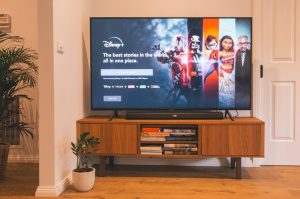
In today’s professional digital landscape, LinkedIn has become more than a networking platform—it’s a powerful distribution channel for thought leadership, brand messaging, and professional storytelling. As more individuals and businesses recognize the potential of LinkedIn, achieving visibility and engagement requires more than just posting regularly. It involves a strategic approach that combines compelling hooks, structured frameworks, and consistent cadence.
Understanding LinkedIn Distribution
LinkedIn distribution is the process of sharing content in a way that resonates with your target audience while meeting the platform’s engagement algorithms. Successful distribution hinges not only on the content’s quality but also on how it’s presented and when it’s delivered. This involves three crucial components:
- Hooks: The opening lines or visuals that capture attention and stop scrolling.
- Frameworks: The structure of the content that makes it digestible and engaging.
- Cadence: The frequency and rhythm of your posting schedule that sustains audience interest over time.
The Power of the Hook
The first few lines of a LinkedIn post determine whether your audience continues reading or scrolls past. Crafting effective hooks is a blend of art and science. They need to be curiosity-piquing, benefit-driven, and audience-relevant. Common types of hooks include:
- Controversial Statements: “Most startups fail. Here’s why yours might too…”
- Relatable Problems: “Ever wonder why your cold emails aren’t converting?”
- Story Starters: “Three years ago I got fired. Today, I run a 7-figure agency.”
- Shocking Stats: “Over 70% of professionals don’t use LinkedIn properly. Are you one of them?”
Effective hooks are tailored to your audience’s pain points, goals, or curiosity triggers. Testing various formats is key to understanding what resonates best with different segments.

Frameworks: Building a Scroll-Stopping Narrative
After grabbing attention with a hook, keeping the reader engaged requires structured storytelling. Using proven content frameworks helps maintain clarity and guide the reader through a narrative. Here are several effective frameworks tailored for LinkedIn posts:
1. Problem-Solution-Outcome
This classic framework is highly effective for case studies, growth stories, or lessons learned.
- Problem: Identify a challenge.
- Solution: Describe the action taken to address it.
- Outcome: Share the results and key takeaways.
2. Hook-Story-Lesson
This format favors educational or motivational content.
- Hook: Grab attention.
- Story: Add context and personal perspective.
- Lesson: Deliver a strong takeaway.
3. Listicle or Breakdown
Best for tips, resources, or tool recommendations. This framework makes content scannable and shareable.
Example: “5 ways to write better LinkedIn posts” with each tip in a numbered format.
4. Challenge-Action-Reward (CAR)
This storytelling framework adds emotional weight to achievements or transformations.
- Challenge: The problem faced.
- Action: What action was taken to overcome it.
- Reward: The benefit gained.
Using frameworks ensures consistency and assists in crafting posts that both educate and convert. Pair this with formatting elements like emojis, bold text, and white space for maximum effect.

Cadence: Create Momentum with Consistent Posting
Even with stellar hooks and frameworks, irregular posting will hinder your LinkedIn reach. Cadence—your posting rhythm—aligns content creation with audience expectations. Here’s how to establish a cadence that works:
1. Start with a Manageable Frequency
For beginners, posting 2-3 times a week is ideal. This prevents burnout while getting your audience used to your content.
2. Optimize Posting Times
While the ideal time can vary, mornings between 8–10 AM and early afternoons around 1–3 PM (in your audience’s timezone) often yield high engagement.
3. Consistency Over Volume
LinkedIn’s algorithm rewards consistency. Sticking to a schedule—even if it’s less frequent—can build stronger audience habits than sporadic bursts of publishing.
4. Leverage Weekly Themes
Creating themes for each day or week makes content planning easier. For example:
- Monday: Industry insights or updates
- Wednesday: Personal story or lesson
- Friday: Weekly roundup or crowd-sourced tips
Alongside main posts, engage daily with others’ content (commenting insightfully or sharing posts) to remain visible and active.
Metrics That Matter
Evaluating your LinkedIn content’s distribution success means tracking meaningful metrics. Here are key indicators to monitor:
- Impressions: Number of users who saw your post.
- Engagement Rate: Reactions, comments, shares as a percentage of impressions.
- Profile Views: Tells if posts are driving enough interest to your profile.
- Follower Growth: Indicates value perceived from your continual posting.
Use LinkedIn’s native analytics or tools like Shield or Taplio to analyze trends over time and determine what works best for your audience.
Distribution Beyond Posting
While crafting and posting content is foundational, true distribution success lies in amplification. A few techniques to broaden your post’s reach include:
- Tagging relevant people or companies with context (avoid spammy tags).
- Including strong CTAs like “Reply with your thoughts” or “DM if you’re facing this problem.”
- Repurposing content into carousels, videos, or short native documents.
- Cross-promoting on email or Twitter with snippets linking back to your post.
Remember: distribution doesn’t end once a post is live. Engage with the audience in comments, repost high-performing pieces, and reflect on analytics regularly.

Final Thoughts
Effective LinkedIn distribution isn’t about luck—it’s the careful orchestration of well-crafted hooks, proven frameworks, and a deliberate cadence. By iterating on what works and refining content strategy based on performance metrics, anyone can grow influence and build authentic relationships on the platform.
As the professional content space gets more competitive, those who master the nuances of distribution will be the ones who stand out not just for what they say but how consistently and strategically they say it.
Frequently Asked Questions (FAQ)
-
Q: How often should I post on LinkedIn?
A: Aim for 2–4 times per week consistently. Quality and consistency matter more than quantity. -
Q: What’s the best time to post for maximum engagement?
A: Mornings around 8–10 AM and early afternoons between 1–3 PM (audience timezone) generally perform better. -
Q: How long should my LinkedIn posts be?
A: Posts of 150–300 words work well. Use short paragraphs, white space, and visuals to improve readability. -
Q: Should I use hashtags?
A: Yes, but sparingly. Use 3–5 relevant hashtags to increase reach without clutter. - Q: What tools can help me schedule or analyze Linked





